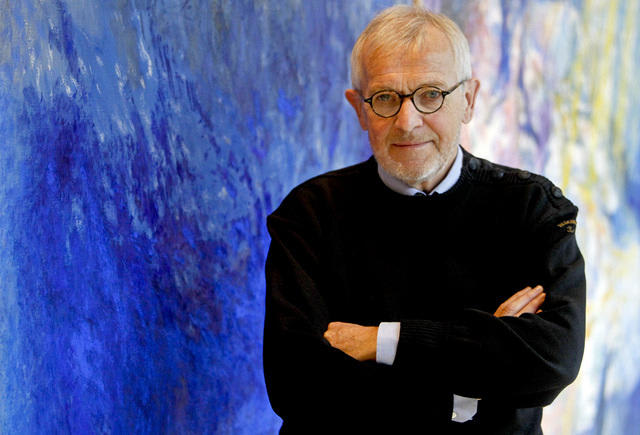
Francis Halzen, the University of Wisconsin-Madison physicist who was the driving force behind the giant neutrino telescope known as IceCube at the South Pole, has been named a winner of the 2014 American Ingenuity Award.
The award is one of ten conferred in nine broad categories by the editors of Smithsonian Magazine. Other winners include signer-songwriter Roseanne Cash in the performing arts category, engineer Kimberly Bryant in the social progress category, and documentarian Bill Morrison for historical scholarship.
Halzen’s award is in the area of physical sciences and was presented last night (Oct. 16, 2014) via video link by theoretical physicist, cosmologist and author Stephen Hawking at a gala event at the National Portrait Gallery in Washington, D.C.
Halzen is being honored for his decades-long effort to build a massive, cubic kilometer telescope under the Antarctic ice to detect cosmic neutrinos. The telescope, decades in the making, last year yielded the first evidence of cosmic neutrinos, nearly massless high-energy particles thought to come from cosmic sources such as supernovae, black holes and the violent cores of galaxies, opening a new field of astronomy.
“When I submitted my acceptance speech the organizers complained that it was too short! But the essential part was already there: Typically, results emerge after following meandering paths, dead ends and plain mistakes,” Halzen said by e-mail. “This was certainly the case when we developed the IceCube concept and built it. This award is dedicated to the many people who contributed to IceCube by making the critical contributions at its many critical junctures.”
Halzen has spent the nearly two decades leading the effort to build and operate the telescope, which is composed of more than five thousand optical detectors sunk deep into the ice beneath the South Pole. Constructed with support from the National Science Foundation and an international consortium representing scientific agencies from nearly a dozen countries, IceCube is the fulcrum of a collaboration that includes more than 275 physicists and engineers from around the world.
Learn more about the 2014 American Ingenuity Awards on the Smithsonian Magazine website (link).